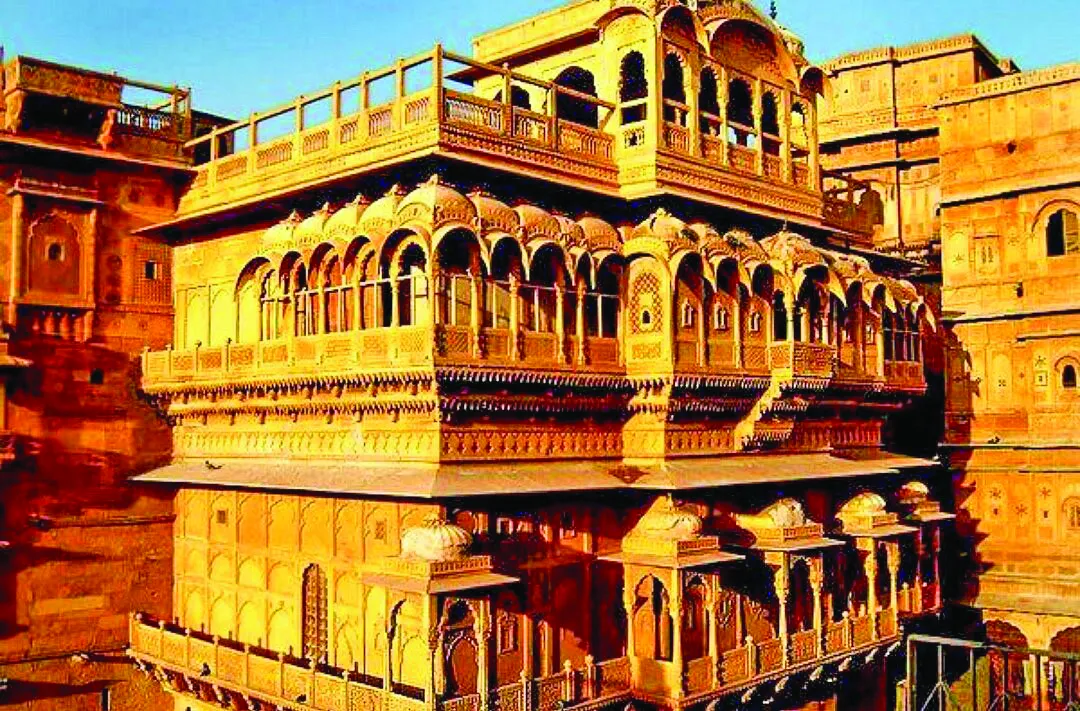During the British Raj in India, several Rajput kings, princes and chieftains are known to have lent support to the nationalist movement against the colonisers. Most Rajputs exercised their prudence by contributing to the freedom movement on the one hand while maintaining diplomatic ties with the British on the other. When it comes to stories of anti-British nationalism amongst the royals, one hears of legends such as Tantia Tope, Tipu Sultan, Rani Laxmibai of Jhansi to name but a few.
Rao Gopal Singhji
For better or for worse, historical discourses are known by nature to be dominated by a highly selective branch of mainstream accounts. It is probably due to this factor that the story of Rao Gopal Singhji of Kharwa as amongst Rajputana’s primary freedom fighters is a lesser-known tale, relegated to mythified legends in the immediate vicinity of Kharwa, his ancestral place of origin. Owing to the continued practice of folklore and Rao Gopal Singhji’s commemoration by the present-day people of Kharwa, a scholar named Melia Belli documented a research paper at the University of Texas and Arlington, which I came across in one of my academic pursuits. I owe most of the content in this article to her work and references, as well as a book on Kharwa’s history lent to me by Baisa Pushpita Singh. I hope that this brief account of the Rao Gopal Singhji’s story as an unrelenting patriot and freedom fighter helps place him closer to the centre stage of our national conscience, and that it arouses our curiosity to re-discover the lesser known tales of our country’s freedom struggle, which might have borrowed much more from our community than we are presently of.
The principality of Kharwa was granted to Thakur Rao Sakat Singhji in Jodhpur for his loyalty to the Marwar court in the year 1594. From thereon, his descendants have reigned over it as the custodians of their land and people.The generous dynasty of Rathore rulers at Kharwa were to produce an extraordinary fifteenth descendant in the form of Rao Gopal Singhji, who would leave his mark as a devout patriot, fierce nationalist and relentless freedom fighter. Born in 1872 to the then ruler of Kharwa, Rao Madho Singhji, Rao Gopal Singhji would live an illustrious life of rebellion and sacrifice, wherein he would carry his undying duty towards his motherland unto his dying breath. Tales of his heroic bravery are commemorated upto this day, when, every spring Kharwa welcomes his death anniversary with a procession and local fair, singing songs and hymns of praise for their beloved king in a collective nostalgia.
Several historians such as Hooja (2006) point out that the anti-colonial fervour had a slower infiltration into the state of Rajputana as compared to the Central Provinces, United Provinces and Bengal. Most of Rao Gopal Singhji’s contemporaries in Rajputana acted either as apologists in favour of or mild critics towards the British overlords. His stance to the unwanted presence of British colonialists in India would be highly violent and defiant in nature and one, which would lead him to usher the movement’s currents into western Rajasthan like a strong gust of desert wind. Rao Gopal Singhji forged allies with freedom fighters within Rajasthan as well as beyond it, and even managed to invite heroes such Ras Bihari Bose to personally invite non literate villages in Rajasthan to join the freedom struggle.
While attending some of the Delhi Durbars around the Swadeshi movement, Rao Gopal Singhji conspired with Jorawar Singhji and Keshvar Singhji of Kota to jointly assassinate the then Viceroy, Lord Hardinge during the Delhi Durbar. The trio were successful in detonating a bomb at the Chandni Chowk intersection, however, their assassination attempt was unsuccessful with Lord Hardinge sustaining minor injuries. Several members of his retinue however, lost their lives. The New York Times, amongst other prominent news papers has duly reported this incident in their issue dated the 12th of December, 1912.
Thereafter, Rao Gopal Singhji and his co-conspirers immediately fled to seek refuge in Ajmer which, by that time had become a hotbed of anti-Raj sentiments and activities. Famous freedom fighters such as Bhagat Singh are said to have taken up temporary refuges in Ajmer as well. For the next few years, Rao Gopal Singhji was to conduct his anti-nationalist operations out of Ajmer and planned another armed attach on the British for the following year, a conspiracy that was caught in time due to being intercepted by the British intelligence. Rao Gopal Singhji and his co-conspirers were thus imprisoned at the neighbouring Todagarh Jail, from which Rao Gopal Singhji is said to have made several daring escapes until his eventual release in 1920.
Upon being released from prison, the die-hard freedom fighter wasted no time in resuming his revolutionary activities in Ajmer. His popularity as not just a regional, but a national a freedom fighter had caught on to an extent that made the British realise the futility in his imprisonment or execution, as that would only make him a martyr in public sentiments and thus, add further impetus to anti-Raj activities. Hence, they released an ultimatum against Rao Gopal Singhji to abdicate his throne in favour of his son, failing which, they would annex Kharwa upon his death and deny his son his regal prerogative. His fear of compromising his ancestral land made Rao Gopal Singhji follow the colonial directives and abdicate his throne to his son and successor, Rao Ganpat Singh. Even after retiring from the active governance of Kharwa, many are convinced of his continued revolutionary activities, although highly clandestine in nature.
Interestingly, Belli notes that unlike other cult freedom fighters who martyred themselves for the nationalist cause, Rao Gopal Singhji shares this cult status despite being fated sixty seven years of life and a natural death. He is also worshipped by the villagefolk of Kharwa for possessing divine powers and a sacrosanct access to the local deity, Chaturbhuj ji during his lifetime. This posthumous reverence of an exalted stature could be traced back to Rao Gopal Singhji’s dynamic and selfless contribution to the nationalist movement despite surrounding trends that were more diplomatic and conformist in nature. He surely made for a bright spark in the explosive revolution that drove India to her freedom and despite the supersession of the less violent ideologies of Gandhiji, no patriot can negate the crucial role played by India’s militant children, when she needed them their bravery and sacrifice the most.























